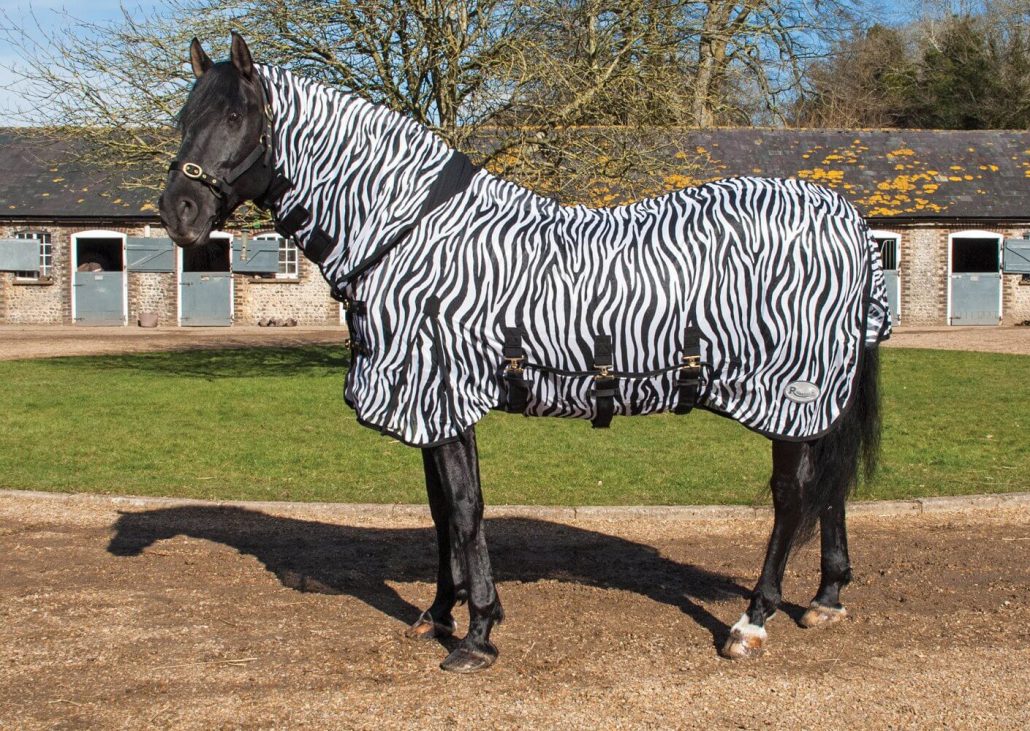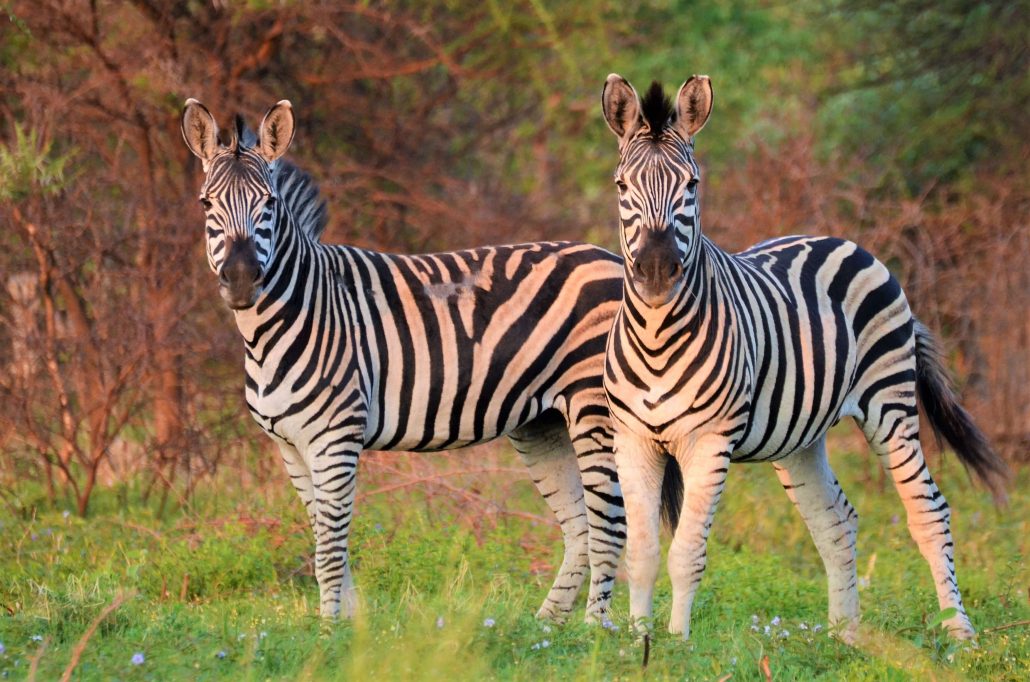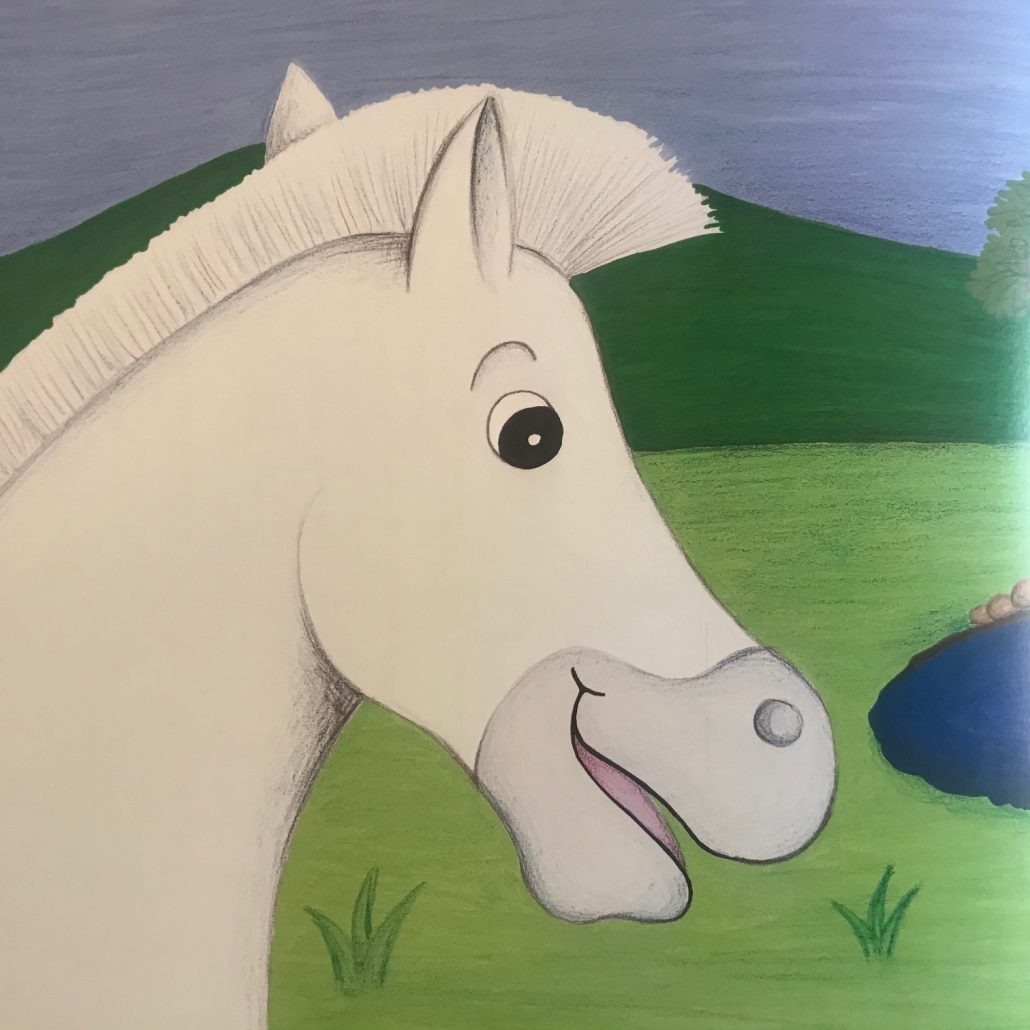Unfortunately, zebras in Malawi aren’t as numerous as in other African countries. But that doesn’t mean you can’t see them here! It’s one of many people’s favorite safari animals, and we understand why. They belong in the same family as horses and donkeys, and are black and white, or was it the other way around? But most safari-goers don’t know much more about these animals in their striped pyjamas. In this blog we tell you everything about zebras in Malawi!
Zebra print
The stripes on zebras not only make them look completely different than the other safari animals in Malawi, it also makes them incredibly photogenic. Moreover, zebra print is popular in the art and fashion world.

Zebras are the most photographed and painted animals in Africa. We certainly understand why!
But what are those stripes actually for?
There are different theories about this. If zebras walk together in a herd, the stripes would cause confusion for predators. It then appears as one large moving mass, making it difficult to pick an individual to hunt.
It also seems that the stripes provide cooling. Because black attracts the heat and white repels the heat, air circulation is created at a micro level, which cools the zebra.
Another theory is that flies and other annoying insects and parasites have poor orientation because of the stripes. Therefor, they would rather choose a buffalo than a zebra, for example.

You can even buy horse blankets with zebra print against the flies! Source: stablecare.co.uk
And maybe there is a completely different reason than we know so far. Or is it just a combination of everything… Are you curious about a local African story about the stripes of zebras? Then make sure to read this full blog!
Zebra facts
There are three species of zebras, namely the mountain zebra, Grevy’s zebra and plains zebra. The zebras in Malawi are plains zebras, including the special subspecies Crawshay’s zebra.
The stripe pattern of each zebra is unique, just like our fingerprints for example. The foal that is born after a gestation period of about a year can recognize its mother by this. In large herds this can sometimes be a bit confusing, so the smell helps too.
Zebras are very social animals. Only dominant stallions are allowed to mate with the mares, which is often preceded by fierce fights. As sweet and beautiful as zebras look, they can kick and bite really hard! And it’s not only the stallions that fight, the mares are pretty mean as well…

If you look closely, you can see a scar of all the fighting on the back of the left zebra
Zebras are incredibly fast, reaching speeds of up to 65 km/h. In addition, they can zigzag like no other, so they often manage to escape from predators.
In addition to running fast, zebras can also walk very far. They accompany the wildebeests on their annual Great Migration of up to 800 km in Kenya and Tanzania. The zebras in Malawi also like to walk with wildebeests, because wildebeests can hear and smell well, while zebras can see better. In addition, zebras like to eat long grass, followed by the wildebeest who prefer the shorter blades. Sounds like a perfect team!

During the Great Migration, about 2 million animals come together each year. Source: Snow Africa Adventures
Tame zebras
Although zebras are related to horses and donkeys, you will never see them pulling a cart or having a saddle on their back. Several people have tried to domesticate zebras, but they remain too wild. Zebras are very stubborn (even worse than donkeys!), go crazy when held in a small space and don’t stop kicking and biting. You see the tamest zebras in (private) zoos. But they also have trouble keeping these animals inside…

Rarely it happens that a donkey and zebra produce offspring: a zonkey. Source: The Independent
Where can you see zebras in Malawi?
When you travel to Malawi, you probably also want to see zebras. The best chance is in Kuti Wildlife Reserve between Lilongwe and Senga Bay, or at Game Haven Lodge near Blantyre. In both places you can also walk or go on a mountain bike safari, which is great for some variation.
At the “wilder” safari spots in Malawi, the numbers of zebras are unfortunately not that high yet. You can see beautiful herds in Nyika National Park (on a plateau with stunning views). In Majete Wildlife Reserve they are spotted more regularly, but zebras are still quite rare in Liwonde and Kasungu National Park. However, here you will find many other types of wildlife, so by combining different parks, you will get the most out of your safari in Malawi!
Swimming zebras in Malawi
In Malawi you can see even more zebra species in another surprising place. Have you ever heard of the cichlids in Lake Malawi? Several species of these colored fish have stripes and therefore bear names such as blue zebra and red zebra. These fish are so beautiful that they are kept in aquariums worldwide. Here in Malawi you can see them in the wild by snorkeling or even diving.
It won’t come as a surprise that there are also lodges named after these unique fish. Such as the beautiful Blue Zebra Island Lodge, which explains more about the species that live around their island on their website.

Do you understand why this cichlid species is called blue zebra? Source: Blue Zebra Island Lodge
Are zebras black with white stripes, or the other way around?
In Africa, many beautiful stories are told. Often to explain something. Like what exactly lightning is, or why giraffes are so tall. The stories differ per country or region, but often carry the same message. About zebras and baboons, you can hear a story like this:
Long ago, before humans walked this earth, all the animals on the African savanna lived peacefully together. Each animal fulfilled a specific role in the circle of life.
Unfortunately, this balance was disturbed when the rains didn’t come. It became known as the Year of the Great Drought and all the lakes and rivers disappeared. There was only one spot left with some water.
The Baboon soon sat down on a large rock next to this water. He claimed it was his. He made the other animals pay to come and drink. No one agreed, but their mouths were too dry to argue with him. The Elephant even had to pay extra because according to the Baboon he drunk too much!
At the end of the long line of animals stood the Zebra, which at that time was still all white. The Zebra has always been a very stubborn animal. When it finally was his turn to drink, he refused to pay. The Baboon didn’t change his mind and sent the white Zebra away.

It was getting dark and the Baboon made a campfire to keep warm during the cool African night. Satisfied with the proceeds, he pondered whether to raise the price the next day. After all, the animals had no other choice!
The Zebra was now really thirsty and decided to take a gamble. Hoping the Baboon wouldn’t see him in the dark, he secretly moved closer to the water. As soon as he reached the edge, he began to drink so greedily that the Baboon could hear. Immediately he saw the Zebra’s white fur glowing in the moonlight. Furiously, the Baboon ran towards the Zebra.

The two animals started fighting and were both too stubborn to give up. This went on all night, until the sun came up again and more and more animals came to see what caused all the unrest.
At one point, the Baboon was afraid that the animals would now all start drinking without paying. This caused him to lose focus during the fight and the Zebra had a chance to give the Baboon a hard kick. So hard, in fact, that the Baboon flew through the air and landed with his buttocks in the campfire. Even today you can still see those red burnt buttocks of the Baboon.
As he fell into the campfire, all blackened pieces of wood were flung through the air. Some ended up on the beautiful white fur of the Zebra, and you can still see the stripes of the ash marks!
PS: Most scientists agree now, that zebras are black with white. This is based on their black skin, which they develop in very early stages of being an embryo. The white stripes only exist, because these hairs don’t have pigment.


What documents do I need to visit Malawi and are they allowing tourists now in Malawi?
Thank you for your questions. As of now (July 2021) unfortunately, visitors aren’t allowed into the country. We don’t know for how long. Regarding the documents you’d need when traveling is possible again, this differs a bit per country. Please visit our blog ”Do I need a visa for Malawi?” for more information. You are also welcome to contact us any time!
We ha Zebras also in Bvumbwe at Game Heaven Lodge. Few Kms from BLANTYRE City.
It’s a nice place too
Thank you for your comment, Carel! You are very right, but if you read better you’ll see that I already mentioned Game Haven.